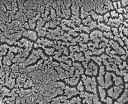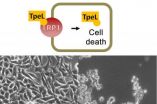(Press-News.org) Changes in air temperature, not precipitation, drove the expansion and contraction of glaciers in Africa's Rwenzori Mountains at the height of the last ice age, according to a Dartmouth-led study funded by the National Geographic Society and the National Science Foundation.
The results – along with a recent Dartmouth-led study that found air temperature also likely influenced the fluctuating size of South America's Quelccaya Ice Cap over the past millennium -- support many scientists' suspicions that today's tropical glaciers are rapidly shrinking primarily because of a warming climate rather than declining snowfall or other factors. The two studies will help scientists to understand the natural variability of past climate and to predict tropical glaciers' response to future global warming.
The most recent study, which marks the first time that scientists have used the beryllium-10 surface exposure dating method to chronicle the advance and retreat of Africa's glaciers, appears in the journal Geology. A PDF is available on request.
Africa's glaciers, which occur atop the world's highest tropical mountains, are among the most sensitive components of the world's frozen regions, but the climatic controls that influence their fluctuations are not fully understood. Dartmouth glacial geomorphologist Meredith Kelly and her team used the beryllium-10 method to determine the ages of quartz-rich boulders atop moraines in the Rwenzori Mountains on the border of Uganda and the Democratic Republic of Congo. These mountains have the most extensive glacial and moraine systems in Africa. Moraines are ridges of sediments that mark the past positions of glaciers.
The results indicate that glaciers in equatorial East Africa advanced between 24,000 and 20,000 years ago at the coldest time of the world's last ice age. A comparison of the moraine ages with nearby climate records indicates that Rwenzori glaciers expanded contemporaneously with regionally dry, cold conditions and retreated when air temperature increased. The results suggest that, on millennial time scales, past fluctuations of Rwenzori glaciers were strongly influenced by air temperature.
INFORMATION:
The study included researchers from Dartmouth, Brown University, Lawrence Livermore National Laboratory, Makerere University and Uganda's Petroleum Exploration and Production Department.
Professor Meredith Kelly is available to comment at Meredith.A.Kelly@dartmouth.edu
Broadcast studios: Dartmouth has TV and radio studios available for interviews. For more information, visit: http://www.dartmouth.edu/~opa/radio-tv-studios/
Dartmouth-led study shows air temperature influenced African glacial movements
Dartmouth scientists' African, South American results show past temperature's effect on tropical glaciers
2014-04-16
ELSE PRESS RELEASES FROM THIS DATE:
Scientists unlock secrets of protein produced by disease-causing fungus
2014-04-16
SAN ANTONIO, Texas (April 16, 2014) — A team that includes scientists from the School of Medicine at The University of Texas Health Science Center at San Antonio, Johns Hopkins University and St. Mary's University reported the structure of a protein that helps a common fungus to infect the body.
The fungal pathogen Candida albicans causes yeast infections, diaper rashes and oral thrush, and is the most common fungal pathogen to infect humans. It can also cause a life-threatening infection of the blood called disseminated candidiasis.
"In this study, we determined the ...
Vanderbilt researchers discover how intestinal cells build nutrient-absorbing surface
2014-04-16
The "brush border" – a densely packed array of finger-like projections called microvilli – covers the surfaces of the cells that line our intestines.
Vanderbilt University researchers have now discovered how intestinal cells build this specialized structure, which is critical for absorbing nutrients and defending against pathogens. The findings, published April 10 in the journal Cell, reveal a role for adhesion molecules in brush border assembly and increase our understanding of intestinal pathologies associated with inherited and infectious diseases.
Pathogens that destroy ...
Surveillance colonoscopy recommendations for average-risk patients with 1 to 2 small polyps consistent with guidelines
2014-04-16
DOWNERS GROVE, Ill. – April 16, 2014 – According to a new study, endoscopists' recommendations for timing of surveillance colonoscopy in average-risk patients with one to two small polyps are consistent with guideline recommendations in about 90 percent of cases. This may be an appropriate target for quality indicators. This is the first multicenter endoscopic database study to quantify adherence to guidelines for timing of repeat colonoscopy after one to two small polyps are found during screening colonoscopy in average-risk patients. The study appears in the April issue ...
Scientists capture ultrafast snapshots of light-driven superconductivity
2014-04-16
A new study pins down a major factor behind the appearance of superconductivity—the ability to conduct electricity with 100 percent efficiency—in a promising copper-oxide material.
Scientists used carefully timed pairs of laser pulses at SLAC National Accelerator Laboratory's Linac Coherent Light Source (LCLS) to trigger superconductivity in the material and immediately take x-ray snapshots of its atomic and electronic structure as superconductivity emerged.
They discovered that so-called "charge stripes" of increased electrical charge melted away as superconductivity ...
Eavesdropping on brain cell chatter
2014-04-16
Everything we do — all of our movements, thoughts and feelings – are the result of neurons talking with one another, and recent studies have suggested that some of the conversations might not be all that private. Brain cells known as astrocytes may be listening in on, or even participating in, some of those discussions. But a new mouse study suggests that astrocytes might only be tuning in part of the time — specifically, when the neurons get really excited about something. This research, published in Neuron, was supported by the National Institute of Neurological Disorders ...
How kids' brain structures grow as memory develops
2014-04-16
Our ability to store memories improves during childhood, associated with structural changes in the hippocampus and its connections with prefrontal and parietal cortices. New research from UC Davis is exploring how these brain regions develop at this crucial time. Eventually, that could give insights into disorders that typically emerge in the transition into and during adolescence and affect memory, such as schizophrenia and depression.
Located deep in the middle of the brain, the hippocampus plays a key role in forming memories. It looks something like two curving fingers ...
Theoretical biophysics: Adventurous bacteria
2014-04-16
To reproduce or to conquer the world? Surprisingly, bacteria also face this problem. Theoretical biophysicists at Ludwig-Maximilians-Universitaet (LMU) in Munich have now shown how these organisms should decide how best to preserve their species.
The bacterium Bacillus subtilis is quite adaptable. It moves about in liquids and on agar surfaces by means of flagella. Alternatively, it can stick to an underlying substrate. Actually, the bacteria proliferate most effectively in this stationary state, while motile bacteria reproduce at a notably lower rate.
In order to sustain ...
Significant baseline levels of arsenic found in Ohio soils are due to natural processes
2014-04-16
RICHLAND, Wash. – Geologic and soil processes are to blame for significant baseline levels of arsenic in soil throughout Ohio, according to a study published recently in the Journal of Environmental Quality.
The analysis of 842 soil samples from all corners of Ohio showed that every single sample had concentrations higher than the screening level of concern recommended by the U.S. Environmental Protection Agency. The findings should not alarm the public, say the authors, who note that regulatory levels typically are set far below those thought to be harmful. Rather, the ...
Preterm births, multiples, and fertility treatment
2014-04-16
While it is well known that fertility treatments are the leading cause of increases in multiple gestations and that multiples are at elevated risk of premature birth, these results are not inevitable, concludes an article in Fertility and Sterility. The article identifies six changes in policy and practice that can reduce the odds of multiple births and prematurity, including expanding insurance coverage for in vitro fertilization (IVF) and improving doctor-patient communications about the risks associated with twins.
Financial pressures provide a powerful incentive for ...
Gate for bacterial toxins found
2014-04-16
Prof. Dr. Dr. Klaus Aktories and Dr. Panagiotis Papatheodorou from the Institute of Experimental and Clinical Pharmacology and Toxicology of the University of Freiburg have discovered the receptor responsible for smuggling the toxin of the bacterium Clostridium perfringens into the cell. The TpeL toxin, which is formed by C. perfringens, a pathogen that causes gas gangrene and food poisoning. It is very similar to the toxins of many other hospital germs of the genus Clostridium. The toxins bind to surface molecules and creep into the body cell, where they lead to cell death. ...
LAST 30 PRESS RELEASES:
New circuit boards can be repeatedly recycled
Blood test finds knee osteoarthritis up to eight years before it appears on x-rays
April research news from the Ecological Society of America
Antimicrobial resistance crisis: “Antibiotics are not magic bullets”
Florida dolphin found with highly pathogenic avian flu: Report
Barcodes expand range of high-resolution sensor
DOE Under Secretary for Science and Innovation visits Jefferson Lab
Research expo highlights student and faculty creativity
Imaging technique shows new details of peptide structures
MD Anderson and RUSH unveil RUSH MD Anderson Cancer Center
Tomography-based digital twins of Nd-Fe-b magnets
People with rare longevity mutation may also be protected from cardiovascular disease
Mobile device location data is already used by private companies, so why not for studying human-wildlife interactions, scientists ask
Test reveals mice think like babies
From disorder to order: flocking birds and “spinning” particles
Cardiovascular risk associated with social determinants of health at individual and area levels
Experimental NIH malaria monoclonal antibody protective in Malian children
Energy trades could help resolve Nile conflict
Homelessness a major issue for many patients in the emergency department
Undocumented Latinx patients got COVID-19 vaccine at same rate as US citizens
ETRI develops an automated benchmark for labguage-based task planners
Revolutionizing memory technology: multiferroic nanodots for low-power magnetic storage
Researchers propose groundbreaking framework for future network systems
New favorite—smart electric wheel drive tractor: realizes efficient drive with ingenious structure and intelligent control
Using stem cell-derived heart muscle cells to advance heart regenerative therapy
Damon Runyon Cancer Research Foundation awards Quantitative Biology Fellowships to four cutting-edge scientists
Climb stairs to live longer
Scientists capture X-rays from upward positive lightning
AMS Science Preview: Hawaiian climates; chronic pain; lightning-caused wildfires
Researchers advance detection of gravitational waves to study collisions of neutron stars and black holes
[Press-News.org] Dartmouth-led study shows air temperature influenced African glacial movementsDartmouth scientists' African, South American results show past temperature's effect on tropical glaciers





